OK Go: From shirts to sheets
Step 2: making the sheets
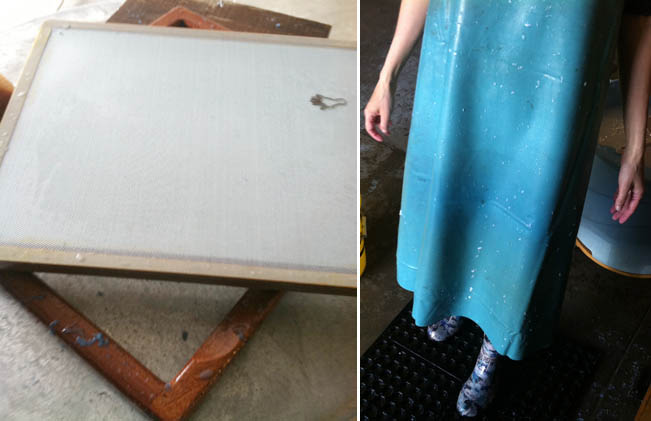
A mould (screened piece) and deckle (frame) is used to form the sheets.
Papermaking is a very wet process so we wear plastic aprons and rubber boots.
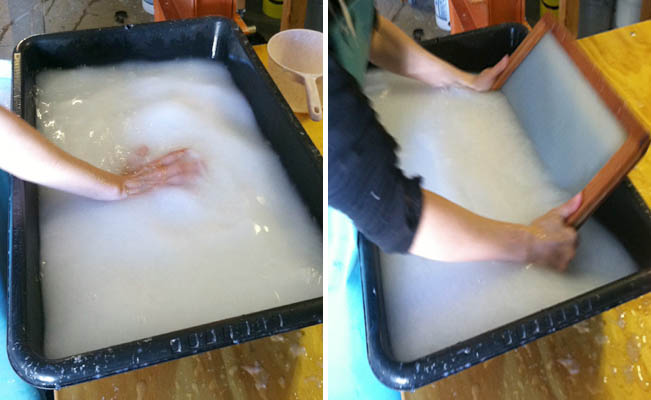
The vat is filled with pulp and water and mixed by hand. This is called hogging the vat.
The mould and deckle is dipped into the vat at an angle and pulled straight up.
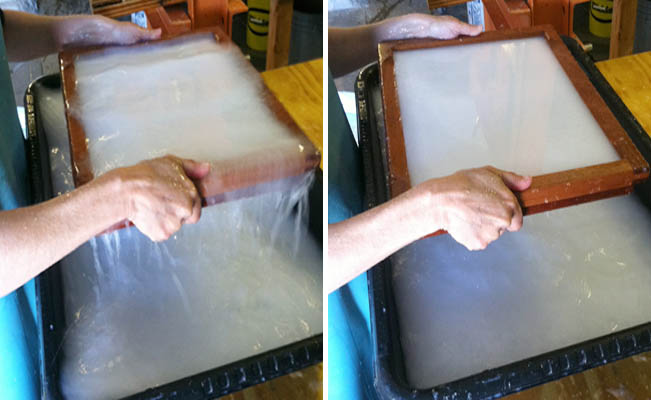
Giving the mould a couple front-back/side-side shakes evenly settles the fibers as the water drains.
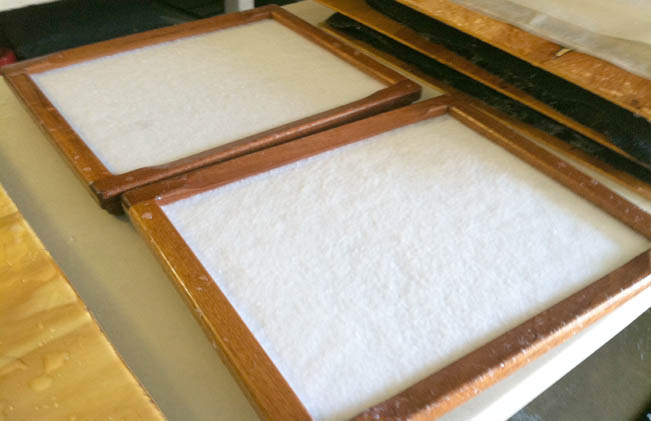
Sheets waiting to be couched.
Couching (pronounced cooching) is the process of transferring the sheet off the mould.
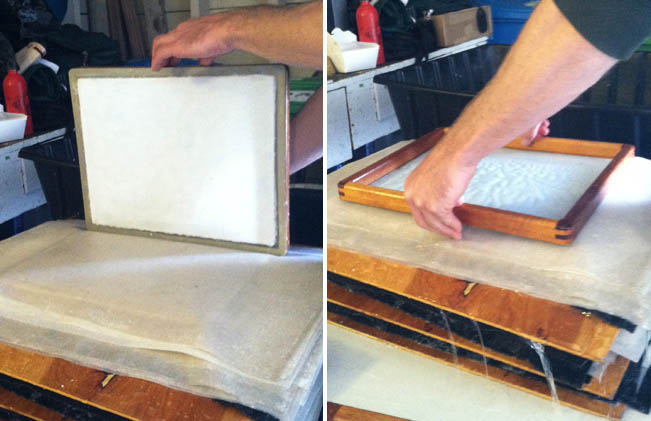
Left: the deckle is removed and the mould is lined up so the new sheet will lie directly on top of the one below, separated by a piece of interfacing.
Right: even pressure is put on the mould to get the sheet to release.
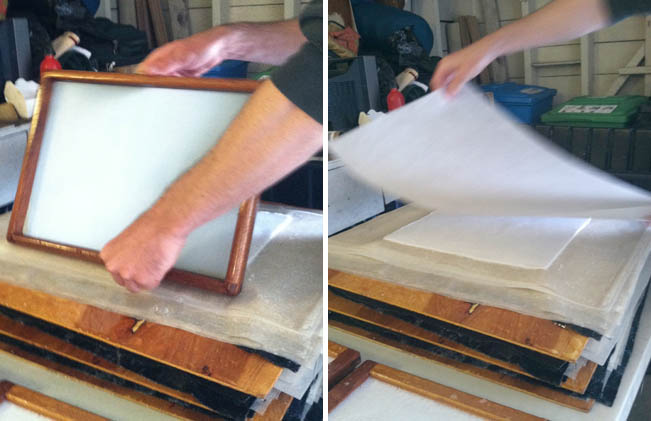
The mould is peeled back leaving the newly formed sheet behind. A piece of interfacing is placed on top of the sheet and the process is repeated.
Traditionally, felt is used but we wanted a smooth paper so we used interfacing.
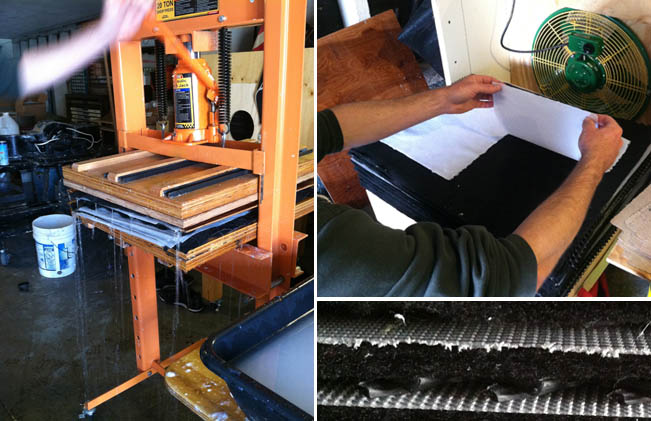
The stack of formed sheets (called a post) is put in a hydraulic press to remove the excess water.
Pressed sheets are carefully placed into a drying box which consists of a layers separated by a channeling system where the air can pass through (bottom right). The two sides are sealed and a fan is set to pull air from the open side. The top is held down with ratchet straps so the paper can dry under pressure, creating perfectly flat sheets.
It takes about 8-10 hours for the paper to completely dry.
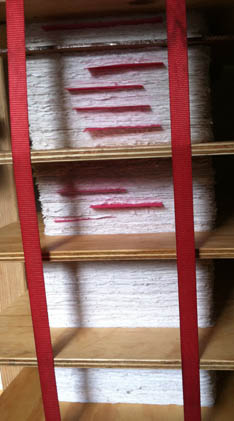 |
The dry sheets are checked for consistency and then placed under tension to cure. Paper should cure for at least a year if it’s to be used for text pages. We put the paper in small stacks of 100 with a board in-between every 500 sheets to help distribute the pressure.We made over 4000 sheets for the text pages.
It took a long time. |
Posted by BANDmade Books on May 24th, 2012facebook
